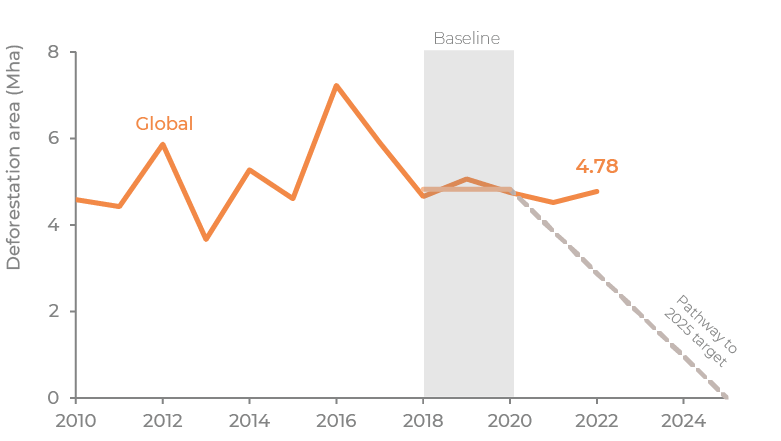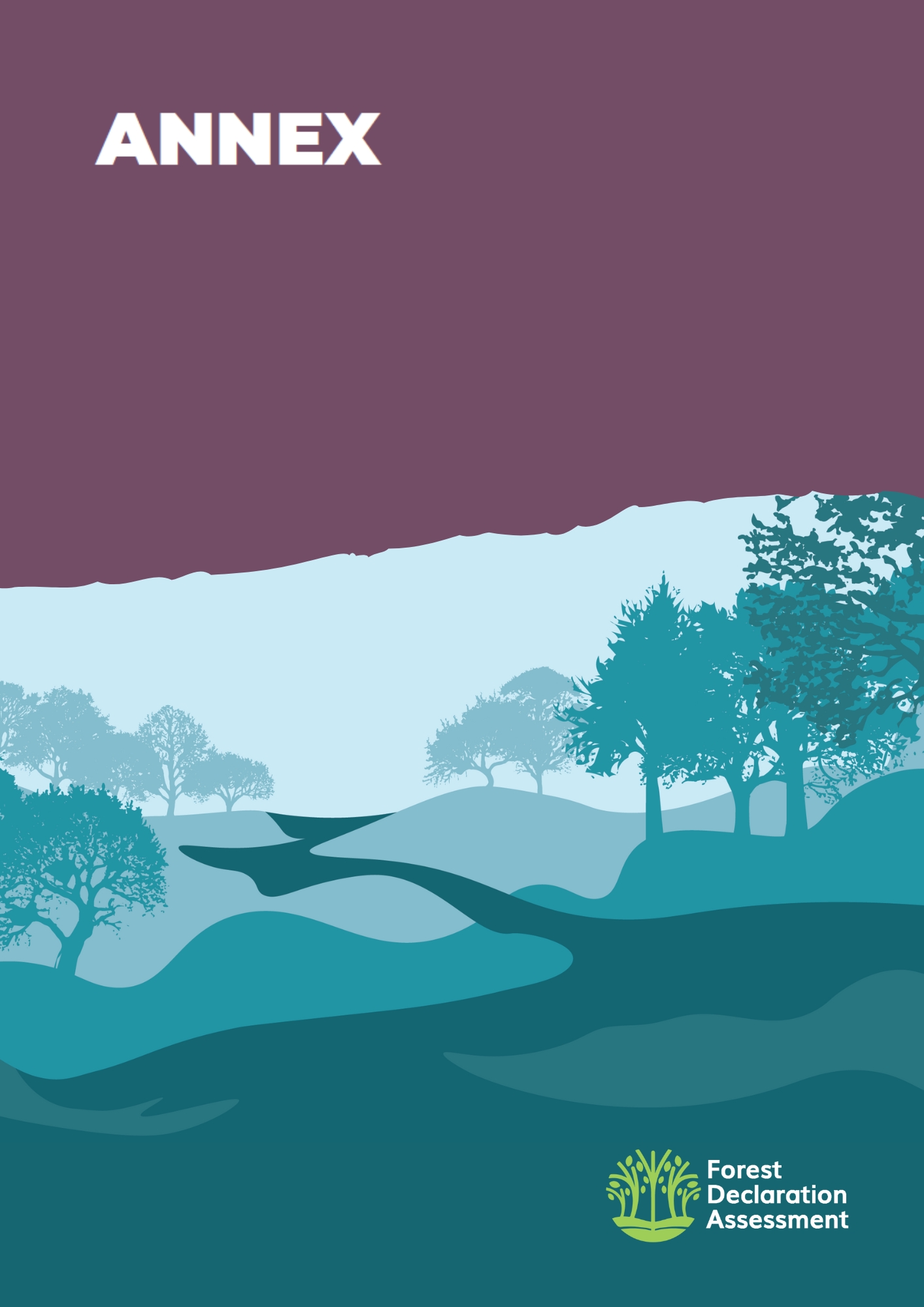Sustainable production and development are essential for global forest goals. Forests and other natural ecosystems are being destroyed and degraded at rates far higher than they can be regenerated. Global market demand for soft commodities like food and timber, and for mined commodities like fossil fuels, metals, and minerals drives the expansion of forest risk activities like agriculture, extractive industries, forestry, and infrastructure.
Over the last decade, governments and companies have made numerous global commitments and statements indicating their intent to protect and restore forests. Most (193) national governments signed on to the 2030 Agenda for Sustainable Development, which includes the goal of sustainably managing and protecting forests. Another almost-universal pledge is the Glasgow Leaders’ Declaration on Forests and Land Use, endorsed by 145 national governments during COP 26 in 2021. Many global companies have joined forces with the Consumer Goods Forum, among other pledges, to promote sustainable commodity production. Many governments and companies have also made individual pledges.
Findings
With only seven years left to achieve the 2030 forest goals, and two years left to achieve the private sector goal to eliminate deforestation from commodity supply chains by 2025, recent deforestation and degradation rates show that the world is off track (see Figure). With insufficient progress, the world risks approaching irreversible tipping points in some areas like the Amazon. Global action towards these goals can’t wait any longer. Additionally, while tree cover loss from forestry is intended to be temporary, degradation indicators show that many forestry practices are unsustainable, particularly logging in primary and old-growth forests.
Following the money, it becomes clear governments give forests low priority, failing to recognize the long-term loss of value. Most developing countries face enormous challenges initiating the bold reforms needed to reconcile their development pathways with forest goals. While the number of countries that have received payments for emission reductions under REDD+ has grown slowly, this incentive offered by donor countries is not commensurate with the challenge of reaching forest goals. However, strong political will has led to (some) alignment in a few geographies, notably in the European Union (EU).
In the private sector, a small group of leading companies in agricultural commodity supply chains continue to prioritize eliminating deforestation and conversion of natural ecosystems. However, their overall impact remains limited, as they control only a small share of the global market, while the majority of companies are either behind on their forest commitments or have yet
to make them. Moreover, corporate transparency related to forest risks remains very limited in the mining and extractives sectors. While companies reporting in 2022 showed small signs of improvement in adopting biodiversity-related commitments and policies, these policies’ quality and effectiveness remains unclear due to a lack of specificity.
In spite of these challenges, Indigenous Peoples (IPs) and local communities (LCs) have made astounding headway in raising awareness at the international level of the critical role they play in safeguarding the world’s forests and other natural ecosystems. Grassroots movements and resistance led by IPs, LCs, and other stakeholders have elevated conversations about the environmental and social impacts of large-scale development projects and the potential for alternative development pathways. Yet, evidence from ground level tells a story of woefully insufficient funding, legal recognition and respect for rights, and protection for environmental defenders.
| Figure: Commodity-driven deforestation, in million hectares, and the pathway toward the 2025 goal |

How do we assess progress?
This chapter assesses the following indicators of progress toward sustainable production and development:
The forest ecosystems that support a liveable climate, invaluable biodiversity, thriving economies, and intangible cultural importance remain under massive pressure. Standing forests are essential for limiting global warming to 1.5°C. Yet, the world remains off track to reach the 2030 goals of halting and reversing deforestation and forest degradation by 2030.
Through a comprehensive analysis across four main chapters-- Overarching forest goals (Theme 1), Sustainable production and development (Theme 2), Finance for forests (Theme 3), and Forest governance (Theme 4), along with 7 country case studies and a set of Recommendations—the 2023 Forest Declaration Assessment sheds light on the state of global forest action.






